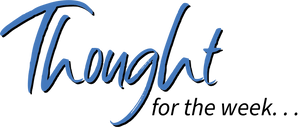Why Most Student Data Analysis Does Not Improve Learning
Teachers have been urged for years to make student data the focus of most professional learning communities, team activities, and similar efforts. After all, experts have routinely advised that the only way to have an impact on student learning outcomes is to understand current performance. However, researchers now have added an important component to this advice. After conducting and reviewing a variety of studies over several years, they found that the focus on analyzing student data has generally not led to improvements in learning outcomes.
Knowing where students struggle, need to improve, and are doing well is important, but that is only the first step. Too often, collecting and analyzing student data has been the sole focus; however, unless the information gained leads to insightful, impactful changes in learning support and engagement, changes in learning outcomes rarely happen.
The researchers noted that educators are investing significant time and effort into data analysis, but the process falters when it comes to whether and how the data is used. The reasons for the lack of effective follow-through appear to be varied.
According to the researchers, responses to the discovery that a student is struggling have disproportionately focused on non-instruction-related reasons as being the problem, such as struggles at home, failure to study, or poor test-taking skills. As a result, no specific instructional or learning experience changes are suggested or implemented. In short, the problem is defined, but the cause is seen as largely beyond the reach of the teacher, so changes are not made.
Another frequent response is to place students on “watch lists” or give them similar designations, but no specific actions are taken to change current performance or address existing learning barriers. Of course, merely watching a student offers little promise for change in performance. Meanwhile, time is lost, presentation of the curriculum continues, and interventions often come too late to change learning outcomes.
Knowing that a student is not performing as expected offers little benefit unless the causes for under-performance are also understood. For example, reteaching a concept or skill without changing our approach offers limited benefits to learners who were unable to learn what was taught the first time. In fact, if the initial introduction resulted in confusion or misconceptions, repeating the process, even at a slower pace, risks reinforcing confusion and confounding misconceptions. The bottom line is that unless our analysis of student data results in thoughtful, informed changes in instructional practice and adjustments in the learning experience of students, we will not see improvements in learning outcomes.
Further, we need to understand the “real story” behind the data. Often, the only way to discover the cause of student struggles is to include students in the process. We can speculate about the causes behind the struggle, but students can give us firsthand insights and context, if we invite and support them to participate. Of course, some students may be too discouraged to invest at first and may need coaching. Other students may be reluctant to admit and discuss areas in which they struggle, and we may need to lower their perceived risks. Still, others may have the skills and possess a level of insight that enables them to reflect on their learning experiences, and they can become partners in constructing a path to improvement.
The benefits of including students in the process of analyzing data, understanding root causes of struggles, and designing learning paths often extend beyond just understanding that there is a problem. When students become partners in their learning, they are more likely to commit to that learning and persist when they struggle. Furthermore, they become better prepared to deal with future learning challenges when we are not present to guide and support their efforts.
Reference:
Hill, H. C. (February 7, 2020). Does studying student data really raise test scores? Education Week.















